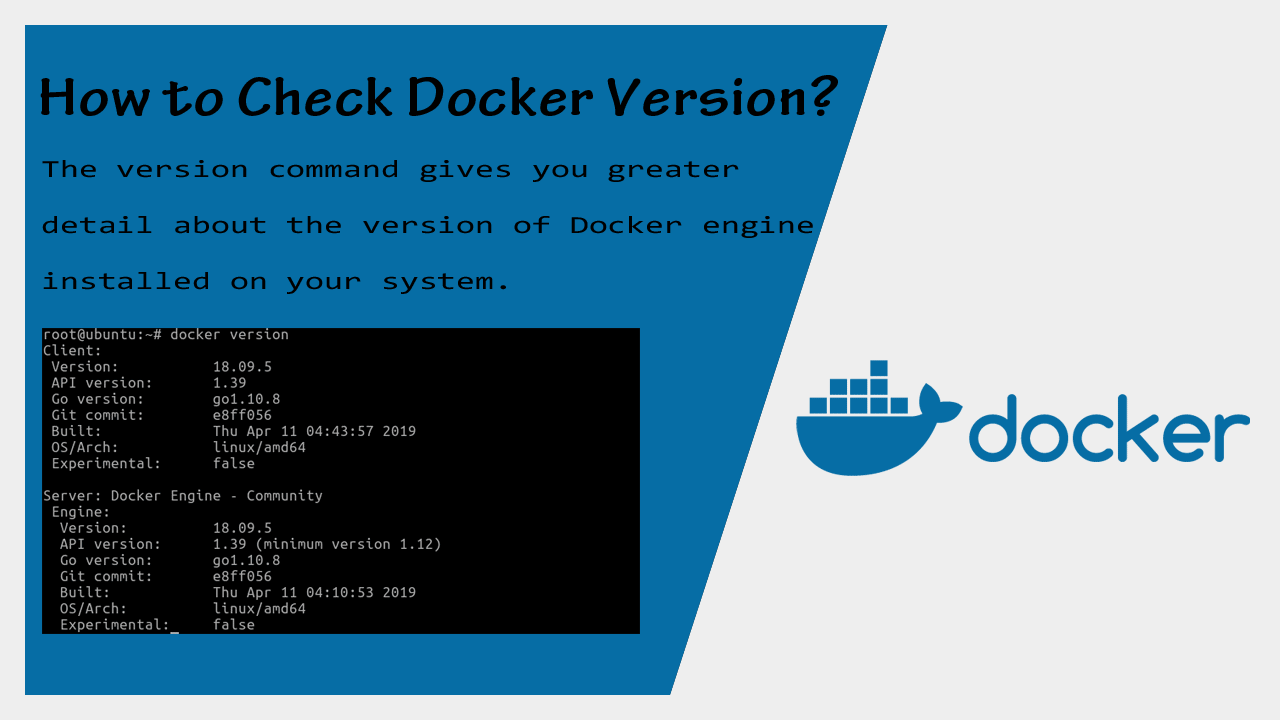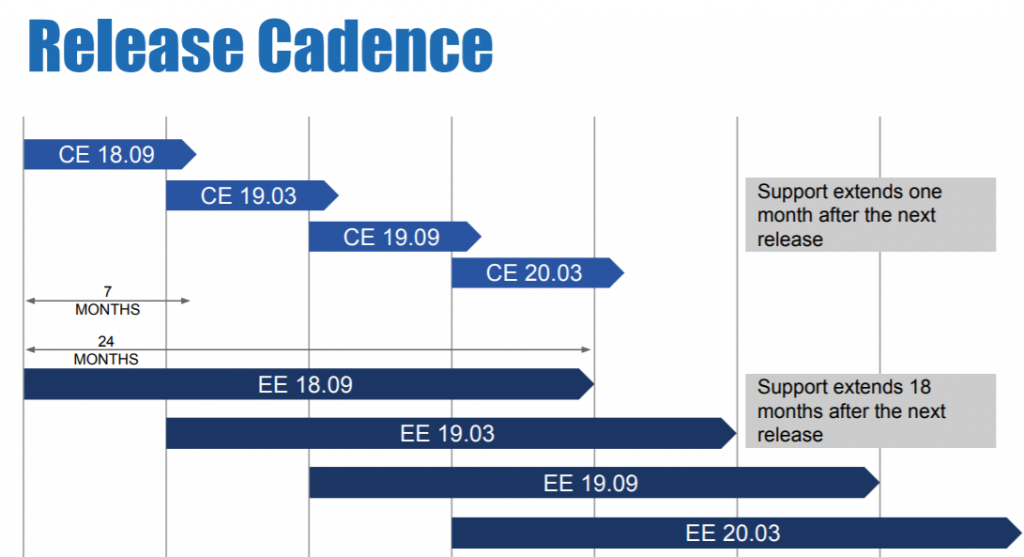- Get Docker Engine Version 11.8
- Get Docker Engine Version 4.0
- Get Docker Engine Version Download
- Get Docker Engine Version
- Get Docker Engine Version Windows 10
We are pleased to announce that we have completed the next major release of the Docker Engine 20.10. This release continues Docker’s investment in our community Engine adding multiple new features including support for cgroups V2, moving multiple features out of experimental including RUN --mount and rootless, along with a ton of other improvements to the API, client and build experience. The full list of changes can be found as part of our change log.
Docker Engine is the underlying tooling/client that enables users to easily build, manage, share and run their container objects on Linux. The Docker Engine is made up of 3 core components:
Docker Engine release notes. This document describes the latest changes, additions, known issues, and fixes for Docker Engine. Note: The client and container runtime are now in separate packages from the daemon in Docker Engine 18.09. Users should install and update all three packages at the same time to get the latest patch releases. We are pleased to announce that we have completed the next major release of the Docker Engine 20.10. This release continues Docker’s investment in our community Engine adding multiple new features including support for cgroups V2, moving multiple features out of experimental including RUN -mount and rootless, along with a ton of other improvements to the API, client and build experience. Get a Beautiful Looking Site with Plone Themes. Plone 5's Diazo theming engine makes it easy for designers to create new themes for Plone and adapt existing ones to Plone. Plone 5 themes can be as easy to install as uploading a ZIP file! Here are five lovely mobile-ready themes for Plone 5, all installable via ZIP file: Clean Blog Spot Booster.

Docker version: By default, this will render all version information in an easy to read layout. If a format is specified, the given template will be executed instead. Distributed, SaaS, and security solutions to plan, develop, test, secure, release, monitor, and manage enterprise digital services.
- A server with a long-running daemon process dockerd.
- APIs which specify interfaces that programs can use to talk to and instruct the Docker daemon.
- A command line interface (CLI) client docker.
For those who are curious about the recent questions about Docker Engine/K8s, please have a look at Dieu’s blog to learn more.
Along with this I want to give a huge thank you to everyone in the community and all of our maintainers who have also contributed towards this Engine release. Without their contribution, hard work and support we would not be where we are nor have this Engine release. When I say ‘we’ throughout this article I don’t just mean the (awesome) engineers at Docker, I mean the (awesome) engineers outside of Docker and the wider community that have helped shape this release 🙂
You can get started with the 20.10 version of Docker Engine either by getting the packages from here or this will be available in this week’s community release of Docker Desktop, for those of your can’t wait on Mac and Windows you can try out the RC of 20.10 using the latest Docker Desktop. Now let’s jump in and have a closer look at some of the 20.10 changes.
Initial support for cgroups V2
Just as a reminder on how Docker works; Docker uses several foundational Linux kernel features to provide isolation to your running processes and the files associated with them. One of these features that we make use of is cgroups. Cgroups in Linux limits the resource usage (CPU, memory, disk, etc.) of a process. Docker combines these with the use of Linux namespaces to isolate your processes in containers.
V2 of Cgroups was first introduced to the Linux kernel in 2016 bringing with it changes to how groups are managed and support for imposing resource limitations on rootless containers. For a bit more background on where this came from and some background on why these changes have taken a while to come along check out Akihiro’s blog.
Now that support for this in runc has been introduced we have added it to Docker. This change in turn has allowed Docker to graduate rootless from experimental to a fully supported feature.
Support for reading docker logs with all logging drivers
Prior to Docker Engine 20.10, the jsonfile and journald log drivers supported reading container logs using docker logs. However, many third party logging drivers had no support for locally reading logs using docker logs, including:
- syslog
- gelf
- fluentd
- awslogs
- splunk
- etwlogs
- gcplogs
- logentries
This created multiple problems when attempting to gather log data in an automated and standard way. Log information could only be accessed and viewed through the third-party solution in the format specified by that third-party tool.

Starting with Docker Engine 20.10, you can use docker logs to read container logs regardless of the configured logging driver or plugin. This capability, sometimes referred to as dual logging, allows you to use docker logs to read container logs locally in a consistent format, regardless of the remote log driver used, because the Engine is configured to log information to the “local” logging driver. Refer to “Configure the default logging driver “ in the Docker documentation for additional information
OS support changes
With the 20.10 release of Engine we are updating the OS support we have, this means we are adding support for both Ubuntu 20.10 and Fedora 33 along with continuing the support for CentOS8 – giving users on these OS’s access to Docker’s latest features.
CLI improvements Idm full mac version.

Along with all of this we have made multiple changes to improve the CLI experience to provide you with access to the functionality you need and the configurability to automate this. We have been looking at making the experience across the CLI more consistent, removing older and unused commands to make it simpler and adding new options to make it easier to get started and easier to script using Docker.
Taking a look at a few of these:
Docker push - we have changed the default behavior to be in line with pull, now if you push an image name without a tag we will only push the :latest tag rather than all tags. To support this we have also now added a -a/all-tags flag to push all the tags of an image.
--pull=missing|always|never – have been added to the run and create commands, giving you more fine grain control over when to pull images
docker exec – we have added a new -env-file flag. This allows you to run docker exec with the –env-file flag and a file containing environment variables. And subsequently print/use any of the variables inside the file in the command.
To learn more about Docker Engine 20.10: Install docker image from docker hub 2.0.
- Visit the Docker Engine website or check out the release notes
- Download Docker Desktop Edge to try this out today
- Download Docker Engine – Community for your preferred operating system
Description
Mac clean docker images. Show the Docker version information
Usage
Get Docker Engine Version 11.8
Extended description
By default, this will render all version information in an easy to readlayout. If a format is specified, the given template will be executed instead.
Go’s text/template packagedescribes all the details of the format.
For example uses of this command, refer to the examples section below.
Options
Get Docker Engine Version 4.0
| Name, shorthand | Default | Description |
--format , -f | Format the output using the given Go template | |
--kubeconfig | Kubernetes Kubernetes config file |
Examples
Default output
Get the server version
Dump raw JSON data
Print the current context

The following example prints the currently used docker context:
As an example, this output can be used to dynamically change your shell promptto indicate your active context. The example below illustrates how this outputcould be used when using Bash as your shell.
Get Docker Engine Version Download
Declare a function to obtain the current context in your ~/.bashrc, and setthis command as your PROMPT_COMMAND
After reloading the ~/.bashrc, the prompt now shows the currently selecteddocker context:
Get Docker Engine Version
Refer to the docker context section in the command line referencefor more information about docker context.
Parent command
Get Docker Engine Version Windows 10

| Command | Description |
|---|---|
| docker | The base command for the Docker CLI. |
